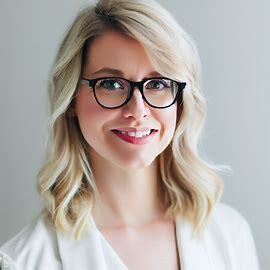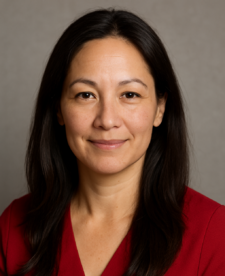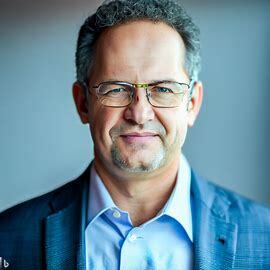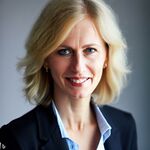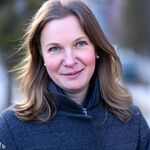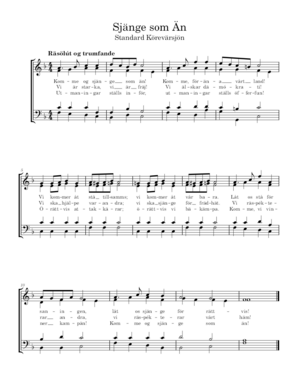Kara
 This encyclopedia article is about the country in northeastern Uletha. You may be looking for a city of the same name.
This encyclopedia article is about the country in northeastern Uletha. You may be looking for a city of the same name.
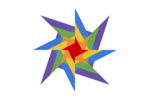
|
United Republic of Kara Fjörnåde Repúblikke Kåra (Karska) Capital: Kara
Motto: Fjörnåde for Dämókrati (United for Democracy) Anthem: Sjänge som än (Sing as One) |
Loading map... |
Kara, officially known as the United Republic of Kara [kɑːɹə] (Karska: Fjörnåde Repúblikke Kåra [fjœrːnɒdə rəpuːblikə kɒːɾa]; Vezhek: Vorencka Republika Kyorja [voɾɛːnska ɾepubliːka kjoːɾja]; Yumerth: Rebulið Jarala Bäðя [ɹeβuliːð jaɹaːla βæːðɚ]) is a country in East Uletha. It shares a border with Älved, Boscunis, Wyster, and UL22g.
The Union of Kara was established in January 1934 with the signing of the Union Treaty of Kara, which united the independent states of Karskat (Kårskät), Vezhekja (Vèžèkija), and Yumerd (Jumяð) under a federal democratic republic.
Initially a 3-state federal union with a very weak federal government, Kara's states remained relatively distinct culturally and linguistically. However, increased cultural mixing and growing demands for federal infrastructure and social programs led to the drafting of the United Kara Amendment of 1978, which passed with strong support from voters of all regions. The amendment, which took effect on 1 January 1979, officially disbanded the Union of Kara and nullified the Union Treaty, establishing the United Republic of Kara and a new federal constitution in its place, which established a 17-state federal system governed by a president and a 300-member legislature.
Today, Kara is a modern, highly developed country with a regulated capitalist economy focused on modern agriculture, technology, and a rapidly-growing renewable energies sector. The government provides many benefits to citizens, especially to the socioeconomically disadvantaged. The national constitution guarantees significant freedoms to individuals and protection for ethnic minority groups.
Geographically, most of the country is situated in or around the valleys of the Tebbjet and Roving Rivers or their tributaries. Both rivers' valleys and the coastline between their mouths are highly populated, with their fertile soil and temperate climate providing an environment in which agriculture has flourished. Kara, the capital city, is located at the mouth of the Tebbjet River and is the center of a chain of urban areas stretching from Täbbjetsstad to Mynnestad. Much of the north of the country is covered in semi-mountainous forests, and the extreme north has a more tundra-like climate around the southern bit of the Boscunian Alps that reaches into the country.
Geography and Climate
Kara has a mixed temperate climate. The southern coast and Tebbjet River valley are particularly temperate, while the northern states are characterized by an alpine mountain climate.
Transportation
Kara's transportation sector is dominated by road and rail transport options for both local and long-distance travel.
Roadways
Kara has a national highway system consisting of 8 interstate highways. In some sections (particularly along the metropolitan corridor along the southern coast), the highways have dedicated right-of-ways, overpasses, and high speeds; in more rural areas they function as core regional roads but are not as free- and fast-flowing as in metropolitan areas.
Rail Transport
Kara has an extensive passenger rail network, with wide-reaching regional rail lines along with 3 national moderate-high-speed train lines. Many cities and larger metropolitan areas also have light rail or subway networks, which generally share stations and fare payment systems with the national and regional rail systems.
Regional Rail (Hövdlinjer)
The flagship of Kara's rail transportation network is the set of 3 regional rail lines, which are operated by the national railway, KNJ (Kårska National Järnväij). The first two lines began construction in 1997 and began operating in 2003 as the KNJ H-1 and H-2. Since their opening, the system has undergone several expansions, with the most recent, a one-stop extension of H-2 from Vrolevroð to Bluv, opening in 2022, and several more expansions are in various stages of planning, approval, or construction.
H-1
Generally considered the centerpiece of the regional rail network, the H-1 line links the core "string" of major cities that stretches from Täbbjetsstad in the north to Hjeplingåde in the west. The line is broken into two divisions, H-1A and H-1B, which serve extensions on each end of the trunk line at half frequency. The primary rolling stock for the line is the Länkär, which is produced by the Kara-based company Hastflyt. The trains are EMUs (electric multiple units) for maximum acceleration and deceleration and are powered by overhead catenary wires.
The H-1 runs at variable frequencies (from 15 minutes to 90 minutes on the trunk line) depending on the location, day, and time. The trunk line (from Hjeplingåde to Fräjtorp) has 24/7 service, and the extensions are served from about 4:00 AM to 2:00 AM on weekdays and from about 5:00 AM to 10:00 PM on weekends. At all times, service on the extensions is at roughly half the frequency of trunk line service; at the termini of the trunk section, trains alternate between servicing H-1A and H-1B.
The trunk line portion of H-1 is fully grade-separated and has a maximum operating speed of 200 km/h (125 mph). The extension sections, which are not fully grade-separated, have a maximum operating speed of 145 km/h (90 mph).
The trunk line runs for 148.2 km (92.1 mi), and the end-to-end time on the trunk line is about 2.5 hours. When factoring in extensions, H-1A (Nykojpeng to Anderslyd), which is 230.0 km (142.9 mi) long, has an end-to-end run time of 3 hours 50 minutes, and H-1B has an end-to-end run time of 3 hours 55 minutes over its length of 235.6 km (146.4 mi).
At the time of its opening in 2003, the line ran from Hjeplingåde to Kärrstad, with major stops in Fvilhävn, Kåra, Fjäjstelstad, and Täbbjetsstad. This was changed in 2007, when an extension to Joneboð was constructed and route H-4 was created between Kåra and Kärrstad. The line was again expanded in 2011, when a former local rail line between Hjeplingåde and Nykojpeng was upgraded to H-1 extension standards. The most recent expansion came in 2017, when the extensions to Vjèlmik and Anderslyd were opened and the line was split into the H-1A and H-1B divisions.
Future plans for the line include upgrades to the extension sections, which will allow trains to travel at 200 km/h (125 mph) for the whole route. Another plan, currently under consideration as a long-range goal for the KNJ, would have the route fully divided into two separate routes, with some realignments along the current trunk route to increase access to the regional rail network.
H-2
The H-2 route was one of the two original routes in the Hövdlinjer system, and its alignment has remained virtually unchanged, with the exception of a 2022 extension from Vrolevroð to Bluv. Like the other H-lines, the H-2 uses EMU trains powered by overhead catenaries. It connects Bluv, near the eastern edge of the country, to the capital city of Kåra.
H-4
The newest regional rail line, H-4, was opened in 2011 when the H-1 line was rerouted from Kärrstad to Joneboð. The H-4 line connects Kärrstad, an important city and state capital in the center of the country, to the national capital, Kåra.
History
Pre-Unification (before 1934)
Prior to the formation of the republic, Kara existed as three separate states: Karskat, Vezhekja, and Yumerd.
Karskat
The areas making up Karskat were once occupied by Yumerthic and Techerian peoples. Sometime during the late 11th or early 12th centuries, however, a large group of West Ulethan people known as Kjels migrated to the area surrounding the mouth of the Tebbjet River. Within a few centuries, Kjellic peoples had intermixed with the Yumerthic and Techerian peoples in the area, and Kjellic religion, culture, and language became dominant. The Kjellic language was influenced to some extent by Yumerthic and Techerian languages, creating the modern language of Karska.
The Kingdom of Karskat was a country that made up much of what is now southern coastal Kara, and it contained Kara City, which is now the capital. The kingdom was officially founded in 1309 by Eryk Johansson af Kåra when he declared himself king over the Duchy of Kara, which was founded by his grandfather, a Lord Birjer of Kara, 50 years prior. Within its first few centuries, the kingdom grew in size through conquest and treaty. Karskat was ruled by monarchs until unification into Kara in 1934; from 1782 to 1934 the monarch was limited by a constitution and eventually a parliament.
Monarchs
| # | Reign | Regnal Name | Birth & Death | Photo | Consort(s) | |
|---|---|---|---|---|---|---|
| Years | Length | |||||
| 1 | 1309 - 1330 | 19 yrs. | Eryk I | 1272 - 1330 | 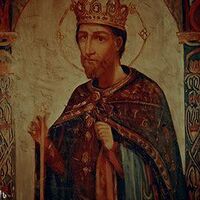
|
Äddet Birjersdytter |
| 2 | 1330 - 1354 | 24 yrs. | Hans I | 1309 - 1354 | 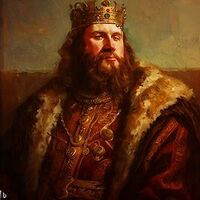
|
Sara Söfje Haskfryrsdytter |
| 3 | 1354 - 1380 | 26 yrs. | Birjer II[1] | 1336 - 1380 | Mari Svänsdytter
Johánne Johansdytter | |
| 4 | 1380 - 1386 | 6 yrs. | Birjer III | 1365 - 1386 | N/A | |
| 5 | 1386 - 1388 | 2 yrs. | Eryk II | 1372 - 1388 | N/A | |
| 6 | 1388 - 1402 | 14 yrs. | Haskfryr I | 1342 - 1402 | Kiri Byrman
Johánne Johansdytter | |
| 7 | 1402 - 1414 | 12 yrs. | Johánnes I | 1374 - 1414 | Anna Kꝏvrœ | |
| 8 | 1414 - 1422 | 8 yrs. | Birjer IV | 1406 - 1422 | N/A | |
| 9 | 1422 - 1425 | 3 yrs. | Kiri I | 1412 - 1425 | N/A | |
| 10 | 1425 - 1440 | 15 yrs. | Jönas I | 1383 - 1440 | N/A | |
| 11 | 1440 - 1458 | 18 yrs. | Johánne I | 1393 - 1458 | Oskar Josefsson | |
| 12 | 1458 - 1486 | 28 yrs. | Jösef I | 1430 - 1486 | Svän Byrman[2] | |
| 13 | 1486 - 1515 | 29 yrs. | Kristaf I | 1457 - 1515 | Sara Lisa Svänsdytter | |
| 14 | 1515 - 1530 | 15 yrs. | Sara I | 1486 - 1530 | Franz Oskar Byrkamp | |
| 15 | 1530 - 1540 | 10 yrs. | Johánne II | 1513 - 1540 | Ande Svänsson | |
| 16 | 1540 - 1570 | 30 yrs. | Haskfryr II | 1521 - 1570 | ||
Vezhekja
The Vezhek people appear to have differentiated as a distinct group during around the 15th century. Genetic testing has shown that most Vezheks descend from a thoroughly-mixed group of Yumerths and Techerians, with some Kjellic ancestry as well. The Vezhek language appears to have originated as a hybrid of Techerian and a now-extinct relative of Yumerth, but several centuries of contact with Karska have significantly influenced the language as well.
Post-Unification (1934-present)
Pre-Amendment (1934-1978)
Governmental Structure
Under the Union Treaty, Karskat, Vezhekja, and Yumerd remained very distinct and retained significant governmental power. Structures of regional and local governance, international treaties, trade governance, and many other areas were under the exclusive jurisdiction of the constituent parties. The few powers held by the National Council were explicitly enumerated in the Treaty and were limited to security and limited economic cooperation. At that point, the Union had very limited presence as a governmental authority, and the administration of the Union government was carried out by only a few select advisors to each member of the Union Council. Over time, the powers held by the Council gradually increased as public sentiment began to favor increased integration, eventually leading to the overhaul and complete restructuring of the government under the 1978 United Kara Amendment.
Amendments to the initial treaty were required to be approved unanimously by the National Council and ratified by a majority vote in each of the three constituent nations.
| Year Enacted | Provision |
|---|---|
| 1934 (original treaty) | Creation and operation of a national armed service to ensure collective defense of all states |
| Establishment of the Union Treaty as the highest law of the land for all constituent nations | |
| Members of the Union Council to be elected by the legislative bodies of each nation | |
| 1942 | Members of the Union Council to be elected by a vote of the citizens of each nation |
| 1946 | Freedom of movement of people (not trade) between the nations |
| Immigration policy to be determined by Union Council | |
| 1950 | Enforcement of immigration policy to be carried out by Union government |
| 1962 | Responsibility for international treaties delegated to the Union government |
| Union officially becomes a member of the EUOIA (Karskat was a founding member, and Yumerd had joined in 1960) | |
| 1969 | Trade barriers between member nations eliminated |
| 1970 | Trade barriers between member nations re-allowed |
| 1972 | Common currency (Uninke) established in all member nations |
| 1974 | All international trade policy delegated to Union government |
| Trade barriers between member nations eliminated | |
| 1978 | Union Treaty declared null and void; goes into effect at noon on 1 January 1979 |
| National Council of the Union of Kara officially disbanded at noon on 1 January 1979 | |
| Union of Kara officially disbanded at noon on 1 January 1979 |
Leaders
The Union Treaty created a national council that served as the presidency of the otherwise separate states of Karskat, Vezhekja, and Yumerd. The council consisted of one member from each state who was elected on a staggered 6-year term.
| Years | Council Members | ||
|---|---|---|---|
| Karskat | Vezhekja | Yumerd | |
| 1934-1935 | Haskfryr Birjär Nilsson | Dannjell Šafbvrie | Ƹiva Bяla Яvleb |
| 1936-1937 | Jandreijž Pjotr Mižgailžon | ||
| 1938-1939 | |||
| 1940-1941 | |||
| 1942-1943 | |||
| 1944-1945 | Mloŋ Bävяne | ||
| 1946-1947 | |||
| 1948-1949 | Ungoillam Šajhigle | ||
| 1950-1951 | Jon Rowela | ||
| 1952-1953 | Danjäl Jaköbsson-Berg | ||
| 1954-1955 | |||
| 1956-1957 | |||
| 1958-1959 | |||
| 1960-1961 | |||
| 1962-1963 | Eume Lяŋä | ||
| 1964-1965 | Öskar Vilhelm Åttesson | ||
| 1966-1967 | Fvillhëim Ežnekk Ŝitzže | ||
| 1968-1969 | Ezðя Bяla Rebe | ||
| 1970-1971 | |||
| 1972-1973 | |||
| 1974-1975 | |||
| 1976-1977 | Jöns-Ålåf Brydeblom | ||
| 1978 | Ahna Sofjaa Bljèlfve | ||
Post-Amendment (1979-present)
Presidents
The first president of the new governmental structure, Jöns-Ålåf Brydeblom, was sworn into office on January 1st, 1979. Elections for president are held every six years, and no president may be elected to office more than once. Currently, elections are held on December 20th, and the new president takes office on January 5th of the following year. In the case of the death, resignation, or impeachment of the president, the current Speaker of the Legislature becomes the de facto president until an election can be held; however, this procedure has never taken place as every president has completed their full term. (See "Presidency")
Government and Politics
Administrative Divisions
 | |
|---|---|
| Administrative divisions of Kara | |
| First-level | 17 länär (states) |
| Second-level | 151 kommunär (municipalities) |
Kara is divided into 17 federal divisions, known as länär (LE-ner) or states, which have considerable governing power. Each state is further divided into municipalities, known as kommunär (CO-moon-eyr); each municipality administers public works and utilities as well as some local community programs. The capital city, Kara, is incorporated as its own state with the same privileges as the other states but is not split up into municipalities due to the impracticality of subdividing a single conurbation, and so the state government also carries out municipality-level responsibilities.
| State | Municipalities | ||||||||||||||||||||||||
|---|---|---|---|---|---|---|---|---|---|---|---|---|---|---|---|---|---|---|---|---|---|---|---|---|---|
| Name (Native Name) | Capital | Area (km2) | Names | # in State | |||||||||||||||||||||
| Bjergdals Län | Kärrstad | 2,967.40 |
|
7 | |||||||||||||||||||||
| Bordäjgrådes Län | Fjäjstelstad | 1,587.68 |
|
21 | |||||||||||||||||||||
| Dilsryls Län
(Rüv Ðilzrüla) |
Ðilzrül | 1,430.66 |
|
9 | |||||||||||||||||||||
| Dörds Län
(Rüv Ðoяðla) |
Ŋülяwiƹa | 3,246.80 |
|
8 | |||||||||||||||||||||
| Gaffedals Län
(Rüv Ðialƹaiðaiяlala) |
Vrolevroð | 1,979.04 |
|
5 | |||||||||||||||||||||
| Gränös Län | Gröndälf | 2,901.37 |
|
9 | |||||||||||||||||||||
| Gvajllåds Län | Söjlestad | 1,312.59 |
|
18 | |||||||||||||||||||||
| Kåra Stads Län | Kåra | 174.79 | Kåra Stads Län[3] | 1 | |||||||||||||||||||||
| Kireks Län | Öddeskryfve | 2,262.32 |
|
4 | |||||||||||||||||||||
| Ljenbäkks Län | Nykojpeng | 1,111.98 |
|
4 | |||||||||||||||||||||
| Mittedålts Län | Strammesdal | 2,392.60 |
|
4 | |||||||||||||||||||||
| Murräs Län | Väjtspläjt | 2,246.27 |
|
5 | |||||||||||||||||||||
| Rövings Län | Hjeplingåde | 2,056.14 |
|
18 | |||||||||||||||||||||
| Söjdrekosts Län | Fyrans | 1,180.22 |
|
15 | |||||||||||||||||||||
| Täbbjets Län | Täbbjetsstad | 1,254.55 |
|
11 | |||||||||||||||||||||
| Upplandas Län | Kvröndesbljum | 1,627.67 |
|
3 | |||||||||||||||||||||
| Vejeks Län
(Vèžèks Stot) |
Vèžèkstot | 1,823.56 |
|
4 | |||||||||||||||||||||
| Government of Kara | |
|---|---|
| Federal presidential constitutional republic | |
| Capital | Kara |
| Head of state | |
| • Präsident (President) | Kiri-Anna Päjtersson-Årdl |
| • Legisatur-Tålare (Speaker of the Legislature) | Ebba Mej-Li Dalstram-Chen |
| Legislature | |
| • Upper house | Nationallegislatur (National Legislature) |
| Judiciary | Hövda-Demstoll (High Court) |
| Öfverdeme (Chief Judge) | Vяn Jozev Jäðwяn |
Major political parties | |
Socialist Green Vezhek Advocates National Democrats Independent Centrist Conservative Christic | |
| Assembly of Nations - member state • Association of South Ulethan Nations - observer state | |
Politics
The members of the legislature as well as the president are elected in partisan elections, although many candidates run (and win) without a party affiliation. Elections for the legislature are held every 2 years, with presidential elections occurring every 6 years. The legislature creates, debates, and passes federal laws with a simple (50% + 1) majority. Federal laws are subject to presidential veto, although this veto can be overridden with a 200-vote (or 2/3) majority in the legislature.
Several political parties have significant influence in the legislature, with the National Democratic, Centrist, and Conservative parties each holding significant power. Independent, non-party-affiliated representatives also hold a substantial number of seats in the legislature, but members do not vote as a group or in a bloc. The current president, Kiri-Anna Päjtersson-Årdl, is a member of the Centrist party.
| Name | Current Leader | Left/Right Ideology | Core Ideologies | Seats Held | Change (from 2023) |
|---|---|---|---|---|---|
| Centrist | Ebba Mej-Li Dalstram-Chen | Center-left to center | Third-way centrism
Regulated capitalism Ulethanism |
78/300 (26.0%) | |
| National Democrats | Astrid Mari Gabrjälsson | Center-left to left | Social liberalism
Ulethanism Liberal capitalism |
65/300 (21.7%) | |
| Conservative | Jöns-Rudolf Björgman | Center-right to right | Classical liberalism
Conservatism Ulethanism |
59/300 (19.7%) | |
| Green | Äve Gröndblad | Left to far left | Environmentalism
Social democracy Ulethanism |
17/300 (5.7%) | |
| Christic | Patrick Josef Christoffersson | Right to far right | Social paleoconservatism
Christic nationalism Antiliberalism |
6/300 (2.0%) | |
| Socialist | Ruejя Ŋяoveƹ | Far left | Socialism
Isolationism Populism |
4/300 (1.3%) | |
| Vezhek Advocates | Rašnar Glidèž | Varies | Vezhek nationalism
Karaskepticism Ulethaskepticism |
3/300 (1.0%) | |
| Independent | none | Varies | Varies | 68/300 (22.7%) |
Presidency
Since the unification of 1979, Kara has elected presidents to 6-year terms. Elections are held on December 20th, with the new president sworn in on January 1st of the following year. Presidents are elected by popular vote; since 2008, presidential elections use a ranked-choice voting system to count votes.
| Term | Name | Party |
|---|---|---|
| 1979-1985 | Jöns-Ålåf Brydeblom | Conservative |
| 1985-1991 | Mattéas-Vilhelm Gustafsson | National Democrats |
| 1991-1997 | Äƹe Olяmeð Ebrenя | National Democrats |
| 1997-2003 | Klara Birgitta Haskfryrsson | Independent |
| 2003-2009 | Bяla Jozev Ŋelävя | Centrist |
| 2009-2015 | Jaköb Üŋoilam Rubeŋя-Ultermann | Independent |
| 2015-2021 | Ahna Èlišabeta Škri-Mmonejž | National Democrats |
| 2021-present | Kiri-Anna Päjtersson-Årdl | Centrist |
Legislature
Members of the national legislature are elected to 2-year terms, with every third legislative election coinciding with a presidential election. After each election, the legislature elects a member to serve as speaker (the speaker often, though not always, is a member of the largest political party in the legislature).
| # | Term | Name | Party |
|---|---|---|---|
| 1 | 1979-1981 | Terje Birjer Vilhelmsson | Conservative |
| 2 | 1981-1985 | Mattéas-Vilhelm Gustafsson | National Democrats |
| 3 | |||
| 4 | 1985-1989 | Anders Stefan Andersson | National Democrats |
| 5 | |||
| 6 | 1989-1991 | Märta Anna Blom-Fryde | Conservative |
| 7 | 1991-1993 | Anders Stefan Andersson | National Democrats |
| 8 | 1993-1995 | Ungoillam Zebbijastijènn Čjeloinneja | Green |
| 9 | 1995-1997 | Jajov Mloŋ Wiljo-Jozeveme | Independent |
| 10 | 1997-1999 | Enrieja Ŋijana Vajaba | National Democrats |
| 11 | 1999-2003 | Bяla Jozev Ŋelävя | Centrist |
| 12 | |||
| 13 | 2003-2005 | Ajan Myrdal | Conservative |
| 14 | 2005-2007 | Mari-Isabella Samuelsson | Centrist |
| 15 | 2007-2009 | Jaköb Üŋoilam Rubeŋя-Ultermann | Independent |
| 16 | 2009-2013 | Ahna Èlišabeta Škri-Mmonejž | National Democrats |
| 17 | |||
| 18 | 2013-2015 | Krijstjian Vollommejjsa Ŝjëʹëllja | Centrist |
| 19 | 2015-2017 | Jöns-Rudolf Björgman | Conservative |
| 20 | 2017-2019 | Astrid Mari Gabrjälsson | National Democrats |
| 21 | 2019-2021 | Ana Яŋvlaj | Centrist |
| 22 | 2021-2025 | Astrid Mari Gabrjälsson | National Democrats |
| 23 | |||
| 24 | 2025-pres. | Ebba Mej-Li Dalstram-Chen | Centrist |
Constitution
The current constitution took effect in 1979 after it passed a national referendum. The document can be changed with the support of the majority of the legislature and a 66% majority of voters in the next legislative election.
Individual Rights
The Indevídjalle-Frydhäter (Individual Freedoms) section of the Karska constitution guaranteed several liberties and rights in its original iteration, with some later additions:
| Liberty or Right | Year Added to Constitution |
|---|---|
| Freedoms of speech and press | 1979 (part of original consitution) |
| Freedoms of peaceful assembly and peaceful protest | |
| Freedom of religious belief and practice | |
| Right to speedy, public trial by impartial jury | |
| Right to vote for all Karska citizens over the age of 18 | |
| Right to refuse to testify against oneself | |
| Freedom from invasive searches without a warrant or probable cause | |
| Freedom from discrimination on the basis of race, color, class, sex, gender, ethnicity, or nationality | |
| Right to citizenship for children born to at least one Karska citizen parent | |
| Freedom from discrimination on the basis of religion or disability status | 1980 |
| Freedom from enslavement beyond the reasonable punishment of a crime | |
| Right to own weapons for purposes of hunting or personal defense, subject to reasonable government regulation intended to preserve public safety | 1984 |
| Freedom from discrimination on the basis of sexual orientation or preference | 1988 |
| Right to vote for all legal, permanent-resident aliens over the age of 18 who have resided in Kara for at least 5 years | 1994 |
| Right to marry without regard to gender for all unmarried, consenting individuals over 18[6] | 2002 |
| Freedom from discrimination on the basis of being transgender or gender-nonconforming | 2007 |
| Right to citizenship for children born in Kara to at least one permanent-resident alien parent | 2018 |
| Right to citizenship for all legal, permanent-resident aliens who have resided in Kara for at least 5 years | 2021 |
| Right to a free secondary education for all children between the age of 6 and 18 | 2025 |
Diplomacy and International Relations
Kara is a member of the Assembly of Nations (AN) and an observer state of the Association of South Ulethan Nations (ASUN). Additionally, Kara maintains diplomatic ties with a growing group of nations.
Embassies
| Embassy Partner | Kara Embassy Location | Kara Ambassador | Foreign Embassy Location | Foreign Ambassador |
|---|---|---|---|---|
| Filo Islands | Gallower Lane, Upper Quarter, Newbel, Ulston, Filo Islands | |||
| Konokibe Lan, Aguri 2-sa 阿久里二沙, Juwon-ku 中央区, 中央區 Juwon-ku, Sainðaul Special Administration City - 作安崎特別自治都, 華邦 Izaland | Vërnnè Märjäner | 9 Jöns-Ålåf Brydeblomsväij, Kåra Norre, Kåra Stads Län, Kåra | ||
| Lisken-Sofi Måknusson | 2 Äƹe Olяmeð Ebrenяsväij, Kåra Norre, Kåra Stads Län, Kåra | Agwae Shaumrin | ||
| 世倫市 Seirun, 中央世倫区 Central Seirun Ward, 世倫市都 Seirun Metro Area, 平國 Taira | Niko-Bo Henning Svänsson-Frydemann | 14 Dannjell Šafbvriesväij, Kåra Norre, Kåra Stads Län, Kåra | Tomoko Nakajima | |
| 伊陽区 Iyō, 治津市 Haritsu, 治津府 Haritsu, 鵜河 Ugawa | Ahna Ungoillaminnja Ŝjëždžaèllju | 3 Jöns-Ålåf Brydeblomsväij, Kåra Norre, Kåra Stads Län, Kåra | ||
| 10 Jöns-Ålåf Brydeblomsväij, Kåra Norre, Kåra Stads Län, Kåra | ||||
| 8, Bric sie Agearder, Corvyr, Hreawirc (binderstat), Hreawirc, Wyster | Ana Яŋvlaj | 4 Jöns-Ålåf Brydeblomsväij, Kåra Norre, Kåra Stads Län, Kåra | Icaenne Foburh |
National Anthem
Kara's national anthem, Sing as One, was written for the ratification ceremony of the United Kara Amendment; the first act of the National Legislature made it the official national anthem.
| Karska | Ingerish |
|---|---|
| Sjänge som Än | Sing as One |
| Komme og sjänge som än
Komme, föräna vårt land Vi kommer åt stå tillsamms Vi kommer åt vår bara Låt os stå för saningen Låt os sjänge för rättvis
Vi älskar dämókrati Vi ska hjälpe varandra Vi ska sjänge för frädhät Vi räspékterar andra Vi räspékterar vårt häm
Utmaningar ställs öfferfun Örättvis attakkärar Örättvis vi bäkämpa Komme, vi vinner kampän Komme og sjänge som än |
Let us come and sing as one
Let us go unite our land For we are united as one We unite for all that's fair Let us stand for what is true Let us stand for what is just
And we love democracy We will lend each other aid We will sue for lasting peace We respect each human heart We respect this land that's ours
Challenges, they shall not stay And injustice may molest But we fight it to the end Come, the battle must be won Let us come and sing as one |
Demographics and Culture
| Demographics of Kara | ||||||||||||||||||||||||||||||||||||
|---|---|---|---|---|---|---|---|---|---|---|---|---|---|---|---|---|---|---|---|---|---|---|---|---|---|---|---|---|---|---|---|---|---|---|---|---|
| Demonym | Karskan | |||||||||||||||||||||||||||||||||||
| Official languages | Karska, Vezhek (Vèžèk), Yumerth (Jumяð) | |||||||||||||||||||||||||||||||||||
Ethnicities | ||||||||||||||||||||||||||||||||||||
| ||||||||||||||||||||||||||||||||||||
| Life expectancy | ||||||||||||||||||||||||||||||||||||
| Birth rate | ||||||||||||||||||||||||||||||||||||
| Death rate | ||||||||||||||||||||||||||||||||||||
Religion
Kara has not had an established state religion since the United Kara Amendment of 1979. Previous to that amendment, the government designated 3 state Christic churches (one for each ethnic/linguistic region). The 3 state churches have since united to form the People's Church of Kara.
Religious Identification in Kara, 2021
Historically a Christic area, a significant majority of Karskans identify as Christic, although some other minority faiths have also gained traction, particularly through immigration. Religiously unaffiliated individuals also make up a substantial minority of the population.
People's Church of Kara
Initially founded in Kara city from a group of several different Christic organizations in the area in the 15th century, the Church of Kara was under the leadership of the Karska monarch until the mid-18th century. It uses a traditional liturgical service, with a particular emphasis placed on music and collective prayer in services. The church continues to play a significant role in Karska society.
For its first several centuries of existence, the church's leadership exerted tight control on ideas and information within the faith, maintaining a strongly conservative belief and policy system, which continued to be very influential in society, although this influence did decrease in the 17th and 18th centuries with growing secularism and independent thought. However, the church's direction changed as a result of the 1784 secession of the Holy Grace Church in Nådensted in Bjergdals Län, which attracted many believers with its strong yet liberal belief system. In response to this crisis, the People's Church loosened control in many areas, allowing more liberal ideas to gain traction within the church.
In 1928, the church's general council elected Hans Jösef Zakrisson as Head Priest of the church. Zakrisson, the de facto leader of the church's liberal wing and a staunch proponent of liberalism and democracy in society, led several reforms in the church that ultimately were very influential in the formation of modern Kara under the Union Treaty of 1934. Within a decade, the People's Church became strongly liberal-leaning (ironically, some conservative detractors defected to the Holy Grace Church, steering it to become more conservative than the People's Church). Since the 1930s, the church has held to a strongly liberal, universalist theology and a cultural emphasis on inclusion. However, the church has also remained open to a variety of theological and political ideas, and so there are some significant conservative factions within the faith, although many conservative detractors have left for the Holy Grace denomination in recent years.
Nonetheless, the liberal majority has steered the church's policy in a strongly progressive direction, such as was seen in its 1963 resolution urging the Karska government to open the country to refugees and its calls for preservation of minority languages in the 1980s. More recently, the church moved in 1995 to allow same-sex couples to be married by the church in places where such marriage was legal, and this move is widely understood to have been a key catalyst of the 1997 legislative decision and 2002 constitutional amendment guaranteeing the right to same-sex marriage in Kara.
In 2011, Jöne Mäjbjerg became the first openly transgender and non-binary priest in the People's Church, and a 2016 council canonized them and renamed their local church (Sankte Jöne Mäjbjergs Folkes- og Domkärke Äjbsö) in their honor.
Holidays
Kara celebrates 9 officially recognized national holidays, which are marked by official celebrations and a variety of informal cultural traditions, as well as legal time-off or overtime requirements for workers.
| Name (Karska) | Date | Description |
|---|---|---|
| Nyårsdaj
(New Year's Day) |
1 January | Marks the first day of the calendar year. |
| Kåradaj
(Kara Day) |
23 January | Commemorates the signing of the Union Treaty of Kara on January 23, 1948. |
| Kristlibsdaj
(Easter) |
Variable Sunday in March or April | Literally means "Christ Lives Day". Kristlibsdaj is an important holiday for the Christic population of Kara, and is officially recognized by the government as a "day of hope and springtime renewal" alongside its religious significance. |
| Äzhe-Ebrenerdaj
(Äƹe Ebrenя Day) |
26 June | Commemorates the birthday of Äƹe Olяmeð Ebrenя, the first Yumerth president of Kara, and celebrates the Yumerth people and culture. Officially signed into law as a holiday by Klara Birgitta Haskfryrsson on January 4th, 1997, just three days after Ebrenя left office. |
| Världsdaj
(World Day) |
3 August | Originally a special festival day unique to the People's Church of Kara, Världsdaj is a celebration of the earth and natural environment. The tradition originated in the church in 1921 as a "festival day recognizing God's love for Creation and calling on people of faith everywhere to protect the natural environment" and eventually gained secular significance as a day of environmental awareness and was designated an official national holiday in 1984. |
| Vezhekjadaj
(Vezhekja Day) |
2 September | A day of special recognition of the Vezhek people, culture, history, and language and a celebration of national multicultural unity. |
| Skörddaj
(Harvest Day) |
12 November | A fall festival commemorating the end of the growing season and recognized as a day of gratitude. |
| Valldaj
(Election Day) |
20 December | A national holiday celebrating the right to vote and ensuring all eligible citizens are able to cast their ballot. |
| Kristsfoddaj
(Christmas) |
25 December | Literally means "Christ's Birth Day". Kristisfoddaj is an important Christic religious holiday that has also gained secular significance. It is officially recognized as a "day of special Christic religious significance" and a "day of goodwill, community love, and cheer amid the cold winter season." |
Languages
Kara has three official languages, Karska, Vezhek, and Yumerth, each of which are native to one of the three founding nations of Kara. Each language retains a dominating presence in its native region and, by national law, state and local governments are required to use their region's native language as the primary language of government business and education. The national government also sponsors regional programs designed to preserve and promote Vezhek and Yumerth, especially among citizens with Vezhek or Yumerth ancestry living in Karska-dominated areas. Other languages also have some presence in the country; most prominently, Ingerish is taught in many schools and is regularly used when communicating with international tourists, businesspeople, and immigrants.
Despite the linguistic diversity within Kara, Karska is spoken by a large majority of residents, and Karska fluency is widely considered essential for success in the academic, business, art, cultural, and political realms. While not mandated, national government business is generally conducted in Karska. Karska's dominance is further cemented by the education space: prior to 2010, all secondary school students were required to demonstrate proficiency in Karska to qualify for graduation, and even after the requirement's repeal, nearly 90% of secondary school graduates in Vezhek and Yumerth regions are proficient in Karska.
Karska
Karska (Kårska) is a Gaermanic language that is spoken in areas Kara once part of Karskat. It uses a 26-letter Latinic alphabet.
Karska Orthography and Pronunciation
Karska generally has a strong grapheme-to-phoneme correspondence. Most letters have a single pronunciation, and those with multiple pronunciations follow simple rules.
| Letter | IPA | Rough Federal States Ingerish Equivalence | |
|---|---|---|---|
| Aa | ⟨a⟩ | got | |
| Ää | ⟨ɛ⟩ | ever | |
| Åå | ⟨ɒ⟩ | dawn | |
| Bb | ⟨b⟩ | bake | |
| Cc | ⟨s⟩ | when before e or i | center |
| ⟨k⟩ | otherwise | cave | |
| Dd | ⟨d⟩ | dote | |
| Ee | ⟨e⟩ | when in the first syllable or accented
depending on dialect |
may |
| ⟨ɛ⟩ | ever | ||
| ⟨ə⟩ | otherwise | problem | |
| Ff | ⟨f⟩ | fee | |
| Gg | ⟨ɡ⟩ | good | |
| Hh | ⟨ç⟩ | when followed by j | hue |
| ⟨h⟩ | otherwise | home | |
| Ii | ⟨i⟩ | me | |
| Jj | ⟨j⟩ | you | |
| Kk | ⟨k⟩ | cave | |
| Ll | ⟨l⟩ | low | |
| Mm | ⟨m⟩ | mat | |
| Nn | ⟨ŋ⟩ | when followed by g | going |
| ⟨n⟩ | otherwise | never | |
| Oo | ⟨o⟩ | over | |
| Öö | ⟨œ⟩ | like Kalmish "ö" in öl or möbel | |
| Pp | ⟨p⟩ | pine | |
| Rr | ⟨r⟩ | interchangeable | rolled r |
| ⟨ɾ⟩ | tapped r | ||
| Ss | ⟨z⟩ | when after n | zoo |
| ⟨s⟩ | otherwise | so | |
| Tt | ⟨t⟩ | too | |
| Uu | ⟨u⟩ | clue | |
| Vv | ⟨v⟩ | vow | |
| Yy | ⟨y⟩ | like Kalmish "ü" in über | |
| Zz | ⟨z⟩ | zoo | |
There are a few multigraphs in Karska:
| Characters | IPA | Notes |
|---|---|---|
| ng | ⟨ŋg⟩ | Varies by region and speaker. A majority of speakers use ⟨ŋg⟩ for an "ng" not at the end of a word (ie Ljunga would be ⟨ljuŋga⟩) and ⟨ŋ⟩ for a final "ng" (ie Kojpeng or Kung as ⟨kœjpəŋ⟩ and ⟨kuŋ⟩, respectively). Some speakers use ⟨ŋg⟩ in all cases. A small minority use ⟨ng⟩. |
| ⟨ŋ⟩ | ||
| ⟨ng⟩ | ||
| sch | ⟨ʃ⟩ | Fairly uncommon. Equivalent to Ingerish "sh". |
| cc | ⟨ʧ⟩ | Very rare and only used in loanwords or place names, especially those with Kalmish influence. Equivalent to "ch" in Ingerish. |
| tsch | ||
| ctc | ||
| dsch | ⟨ʤ⟩ | Rare. Used only in loanwords and place names, especially those of Kalmish influence. Equivalent to Ingerish "j" as in "judge". |
Regional Dialects
Due to the relatively small size and interconnected nature of the region in which Karska is spoken, regional dialects of the language are minimal. The most prominent feature of regional Karska dialects is the Ätta-Etta merger, in which ätta (eaten) and Etta (a feminine given name) are both pronounced as ⟨ɛta⟩. (In areas without the merger, ätta is pronounced ⟨ɛta⟩, while Etta is pronounced ⟨eta⟩). The merger is standard in the west of Kara (Ljenbäkks Län, Murräs Län, and Rövings Län roughly west of Brövensby) as well as in Kireks Län; the rest of the country, including the capital city of Kåra, generally retains the distinction between ä and e.
Accent Marks
In Karska, the first syllable of a word is always emphasized, except when otherwise marked with an accent on the vowel of the syllable to be emphasized. Only Aa, Ee, Ii, Oo, and Uu can be accented; Åå, Ää, Öö, and Yy are never accented.
Example pronunciations of words/terms/names
| Term/name | IPA | Rough Federal States Ingerish Equivalent |
|---|---|---|
| Ädrúnaby | ɛdɾunaby | Ed-run-ah-beu |
| Bördäjgrådes Län | bœɾdɛjgrɔdəs lɛn | Bor-deyg-rawd-uhs Len |
| Fjörnåde Repúblikka Kåra | fjœrnɔdə ɾəpublika kɔra | Fyoor-nah-duh Ruh-poob-lee-kah Kaw-ra |
| Hjeplingåde | çjɛpliŋgɔdə | Hyehp-leeng-ah-duh |
| Län | lɛn | Len |
| Märänétjårp | mɛɾɛnɛt'tjɔrp | Meh-reh-neht-tjawrp |
Vezhek
Vezhek is one of Kara's official languages, and it is spoken in Vezheks Stot in the northwest portion of the country. It is generally considered to be a descendant of the Techerian languages, with heavy Karska influence in vocabulary. The language also shows some influence from Yumerth. It also uses a Latin-based alphabet, but is not phonetically consistent like Karska and Yumerth (quite the contrary — it is known for its extremely complicated spellings of seemingly simple words).
| Vezhek | IPA | Rough Ingerish Equivalent |
|---|---|---|
| Čëllèdebjorkejt | t͡ʃəlɛdəbjorkaɪt | Chuh-led-duh-byor-kait |
| Kitŝ-Jʹapfijk | kit͡ʃ japfik | Keetch Yahp-feek |
| Ahna Èlišabeta Škri-Mmonejž | ana elɪʃabeta skri manaɪʒ | Ahn-nah Ey-lih-shah-bey-tah Skree Mahn-aizh |
| Vèžèkstodt | veʒɛkstot | Vey-zhek-stoht |
| Zjuët | zjyt | Zyeut |
| Haatahhaŝa | χataχaʃt͡ʃja | Hah-tah-ha-shchyah |
Yumerth
Yumerth is the only living member of the isolated Yumerdic language family that is spoken in the eastern portions of Kara. In the centuries since Kjellic settlement, Yumerth has had some linguistic interaction with Karska, and both languages have shared some words and linguistic features. Nonetheless, it remains a distinct language.
Yumerth is believed to have started developing its own writing system just a few centuries before Kjellic settlement, but this writing system never took off and was quickly replaced by the developed Latinic script used in Karska, although some new characters were developed to represent sounds present in Yumerth but not Karska. The alphabet has a phonetic orthography and has 20 letters (plus the letter Žž, which is sometimes used as an alternate representation of the traditional Yumerth letter Ʒʒ):
| Letter | IPA |
|---|---|
| Aa | a |
| Ää | æ |
| Bb | β |
| Ðð | ð |
| Ee | e-ɛ |
| Ii | i-ɪ |
| Jj | j |
| Ll | l |
| Mm | m |
| Nn | n |
| Ŋŋ | ŋ |
| Oo | o |
| Rr | ɹ |
| Яя | ɚ-ɝ |
| Uu | u |
| Üü | y |
| Vv | v |
| Ww | w |
| Zz | z |
| Ʒʒ | ʒ |
| Žž |
- ↑ When declaring himself king, Eryk posthumously crowned his grandfather and father as Birjer I and Johan I, respectively, and so the first living monarchs named Birjer and Johan ruled as Birjer II and Johan II.
- ↑ While same-sex marriages were not allowed at this time, unmarried but long-term same-sex partners (like Jösef and Svän) were usually accepted as being a valid (although less "important" than a marriage) relationship, especially for royalty and nobility. In fact, in some wealthy families, same-sex partners could even adopt children, as did Jösef and Svän with their son, King Kristaf I.
- ↑ The state government fills the role of municipal government and is considered a municipality for statistical purposes.
- ↑ Thanks to Timboh's article on Navenna for the inspiration for this table!
- ↑ Includes 6 incumbent members who were re-elected after switching affiliation from Independent (4 to Centrist and 2 to National Democrats) for the 2025 election.
- ↑ The amendment was purely symbolic as the legislature guaranteed the right to same-sex marriage in 1997.


